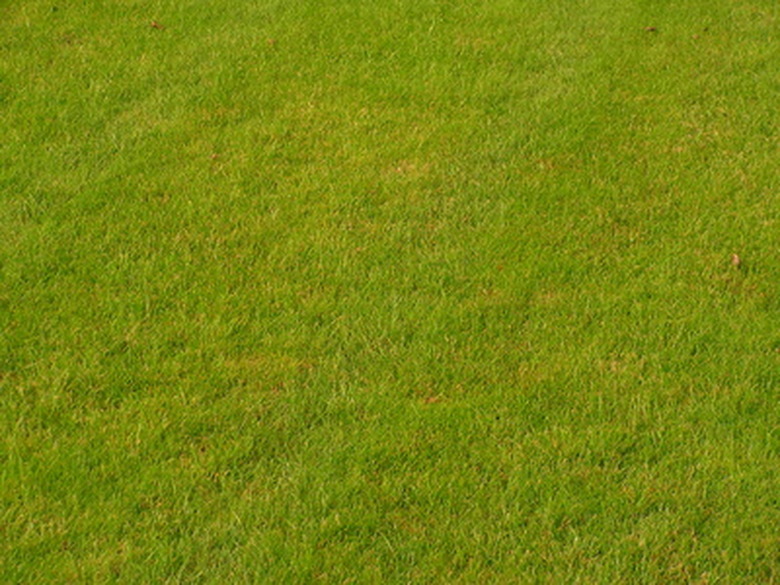Iron Chlorosis & Zoysia
Though your green spring zoysia grass usually thrives throughout the warm summer months, it is at risk of yellowing due to the nutrient deficiency iron chlorosis. Deficiencies often cause a knee-jerk assumption that your plant simply needs a hefty dose of the nutrient in question. However, the issue is due to environmental and management factors that inhibit zoysia from necessary uptake.
Care
Vigorous plants are nearly always more capable of avoiding and recovering from health problems when compared to poorly maintained plants. Reduce the incidence and intensity of an iron chlorosis problem by growing your zoysia grass in locations that offer full sun. Zoysia thrives in an acid pH range of 6.0 to 6.5, according to the K-State Research and Extension.
Description
Iron chlorosis in your zoysia grass is a problem that occurs in many lawns caused by a deficiency of the nutrient iron. Iron is a necessary component for the production of chlorophyll, according to the Texas AgriLife Extension Service. Chlorophyll is the molecule responsible for grass's green color as well as its ability to absorb energy from the sun. When zoysia lacks sufficient iron, chlorosis results in the yellowing of veins and blades. When left untreated, grass may die.
- Though your green spring zoysia grass usually thrives throughout the warm summer months, it is at risk of yellowing due to the nutrient deficiency iron chlorosis.
- Iron chlorosis in your zoysia grass is a problem that occurs in many lawns caused by a deficiency of the nutrient iron.
Misconceptions
Iron chlorosis may result from a combination of factors. Zoysia is a warm-season grass that thrives in higher temperatures. An unexpected drop in temperature that leads to cooler soil may result in chlorosis. Microbes within soil increase iron uptake with their activity; cooler soils deplete microbial activity, according to the Texas AgriLife Extension Service. Other factors like excessive precipitation may reduce iron uptake.
Though the application of iron will create a quick fix, the solution is a temporary one. Your grass will return to a greener shade, but the iron will not fix the problem occurring within the soil and will disappear when you mow your lawn.
- Iron chlorosis may result from a combination of factors.
- An unexpected drop in temperature that leads to cooler soil may result in chlorosis.
Considerations
Improper maintenance is often part of the iron chlorosis problem with your zoysia grass. Avoid over-fertilizing your zoysia lawn as increases in phosphorus inhibit iron uptake, according to the Texas AgriLife Extension Service. Maintain consistently well-drained soil to prevent waterlogged conditions that prevent iron uptake, as well. Another leading contributor to iron chlorosis in zoysia is growth in alkaline soil.
Solution
Consider consulting a professional and conducting a pH soil test to determine whether your soil needs acidification. The addition of 1 to 5 lbs. of elemental sulfur for every 200 square feet of lawn brings soil pH down to a level that reduces chlorosis. Contact a licensed professional for assistance with your home landscape as reducing the pH level too much results in subsequent problems.
- Improper maintenance is often part of the iron chlorosis problem with your zoysia grass.
- Contact a licensed professional for assistance with your home landscape as reducing the pH level too much results in subsequent problems.
